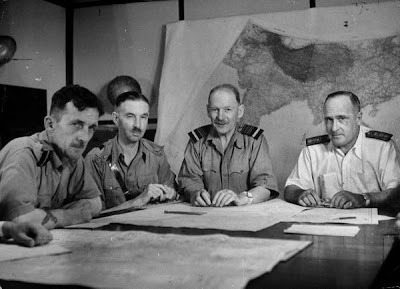1st Dec 1941 Sir Robert Brooke-Popham has ordered “2nd Degree of Readiness”. Troops were ordered back to barracks and Volunteers were mobilized.
5th Dec 1941 War Office gave authority to Brooke-Popham to execute Operation Matador, upon the following situations:
a) If he had information that Japanese expeditions were advancing with apparent intention on the Kra Isthmus; OR
b) If the Japanese violated any other part of Thailand.
6th Dec 1941, a Hudson from No.1 RAAF Squadron based in Kota Bahru reported enemy ships convoys 265 mile north. However, after consultation with the Navy, Brooke-Popham hesitated and instead ordered “No. 1 Degree of Readiness” – ready for immediate operations and prepare for enemy attack without prior warning. No order for Operation Matador was executed.
In Kuala Lumpur, during a conference between GOC Malaya Command & GOC III Indian Corps, Percival acted on the sighting reports by No. 1 RAAF. He advised Heath to make preparatory launch of Matador and ordered “Raffles” – Code word for “Action Alert”
Evening discussions in Singapore between Sir Shenton Thomas, Brooke- Popham & Percival – Brooke-Popham decided that it was too premature to launch Operation Matador
7th Dec 1941 – 1848hrs; Japanese vessels were spotted 150 miles from Kota Bahru, steering south – 30 hrs after the 1st Japanese sightings. Brooke-Popham claimed that this latest report only reached him at 2100hrs.
7th Dec 1941 – 2230hrs Malaya Command Conference at Singapore Naval Base War Room - After again consulting with the navy and the army GOCs, Brooke-Popham again delayed “Matador” for the night and placed General Heath 11th Division to be ready to execute Operation Matador at dawn of 8th Dec 1941.GOC Malaya Command, Percival, by then, knew it was too late to preempt the landings at Thailand.
8th Dec 1941 – 2220hrs the Japanese ships were anchored off the coast of Kota Bahru and by 0330 hrs, landings by the Japanese at Singora and Patani have been effected. 11th Indian Division was still waiting for dawn at the border of Malaya – Jitra.


